The Article
Pro 2019 Vinyl Cleaner Pro From Audio Desk
11th October 2019
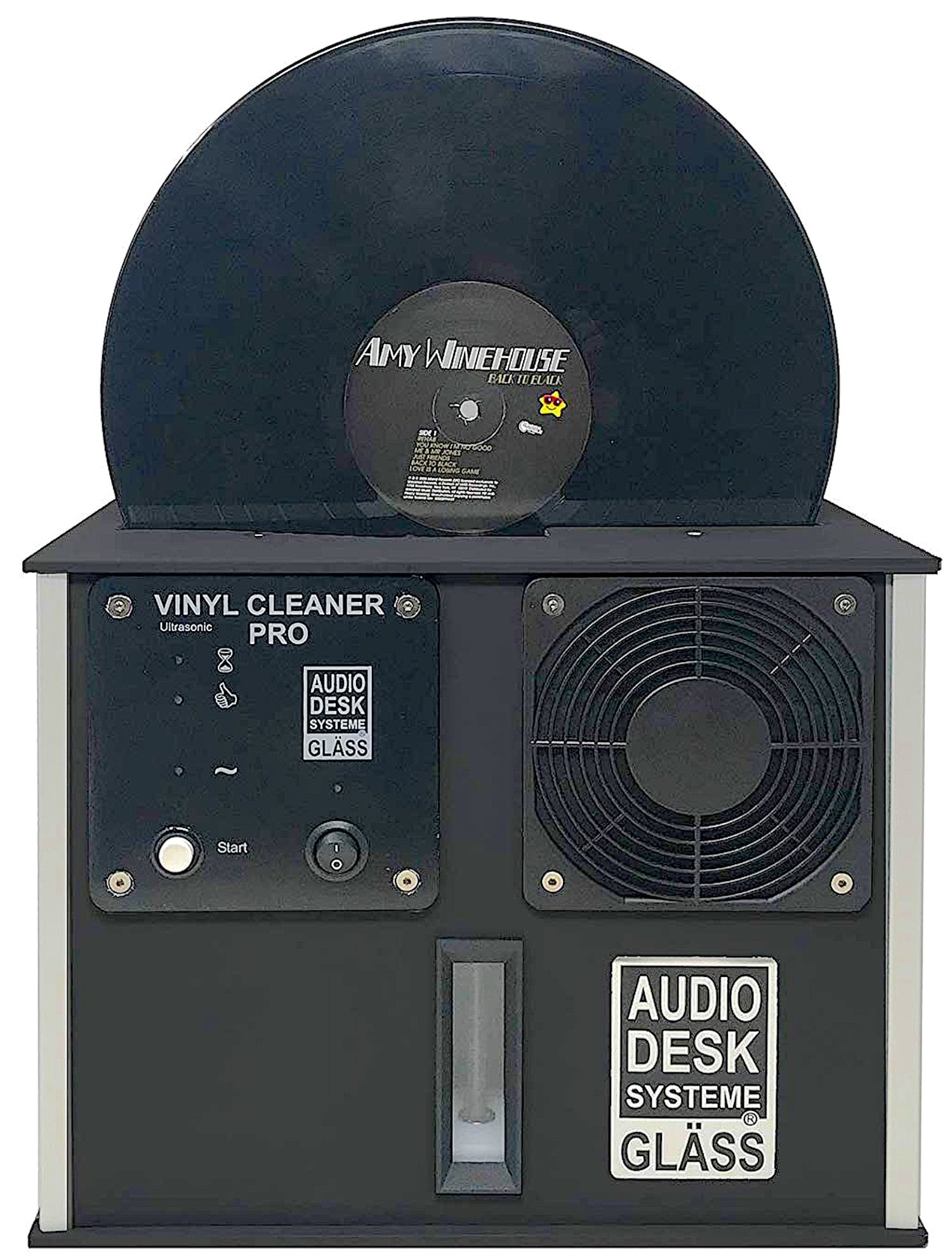
A new version of Audio Desk’s ultrasonic cleaner has sneaked into the wild, the Pro 2019. Paul Rigby gets to grips…
This new version of the Vinyl Cleaner Pro (more on the name below) has hit the streets and brings with it a host of changes. Some are larger than others but it’s good to see that the company is putting thought and resources behind this record cleaning machine. A machine that, I have to say right now, is my favourite method of cleaning records.
I did give the original RCM a full review and the basic design and cleaning methods remain the same so I’m not going to repeat myself here. To learn of how this machine works, the background and nature of ultrasonics as a cleaning technology and a couple of informative videos to boot, I urge you to check that out HERE. Then come back to investigate the Pro 2019’s improvements.
And they are?
Apart from the fact that my old Pro [left] needs a clean, the differences here amount to a faceplate change and a slightly larger window on the available cleaning liquid [right, below centre]The new Pro 2019 cleaner apparently has an improved ultrasonic generating system that utilises less actual energy. Audio Desk, as a vinyl cleaning company, prefer to ‘go gentle’ in terms of the force that is used to clean records. Other companies out there disagree but, because there is zero research in terms of potential (if any) long term damage from ultrasonic use, I err on the gentle approach and would advise the same to you. Why risk it?The 2019 version also has a larger aperture to assist with removing the LP at the end of the cycle to avoid contacting the microfibre barrels. The earlier version was prone to touching the internal, rotating barrels which could mean lifting the vinyl record and adding a smear of water to the vinyl surface. Having gone through a cleaning cycle only to remove the vinyl with a slight smear was so frustrating. It didn’t happen all of the time but enough to cause irritation. This new design tweak was done to prevent this accidental addition. I have to say that I did not encounter any smearing on this new version – I did on the older version. So thumbs up here for the Pro 2019!
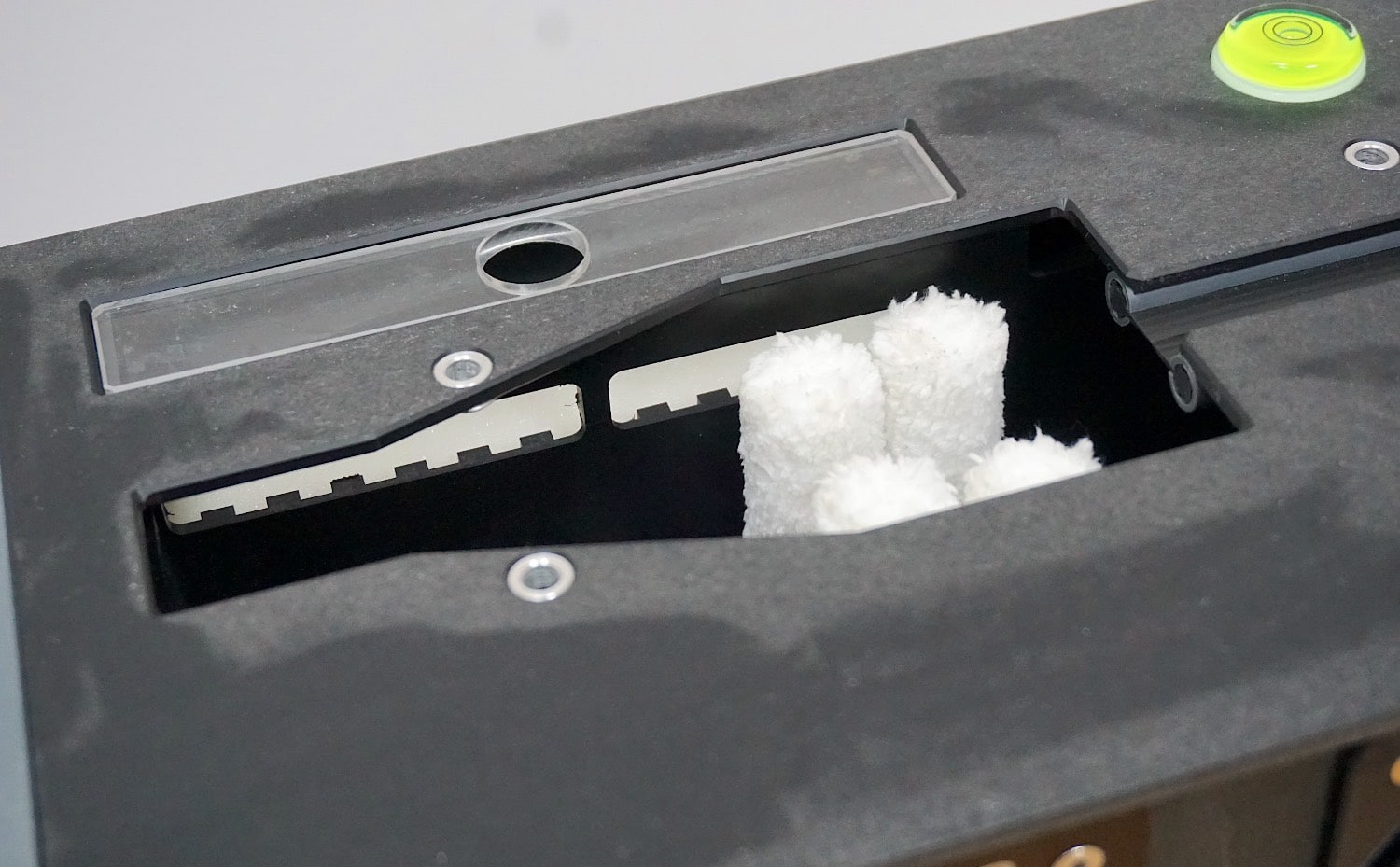
You’ll also note that the wiper blades fitted in the vinyl slot, seen on the right as you look from the front, are black and not white. Apparently, they have a coating on them to extend longevity. I have no idea if that is true and by how much but I do know that they appeared to be more efficient in terms of wiping away excess liquid.
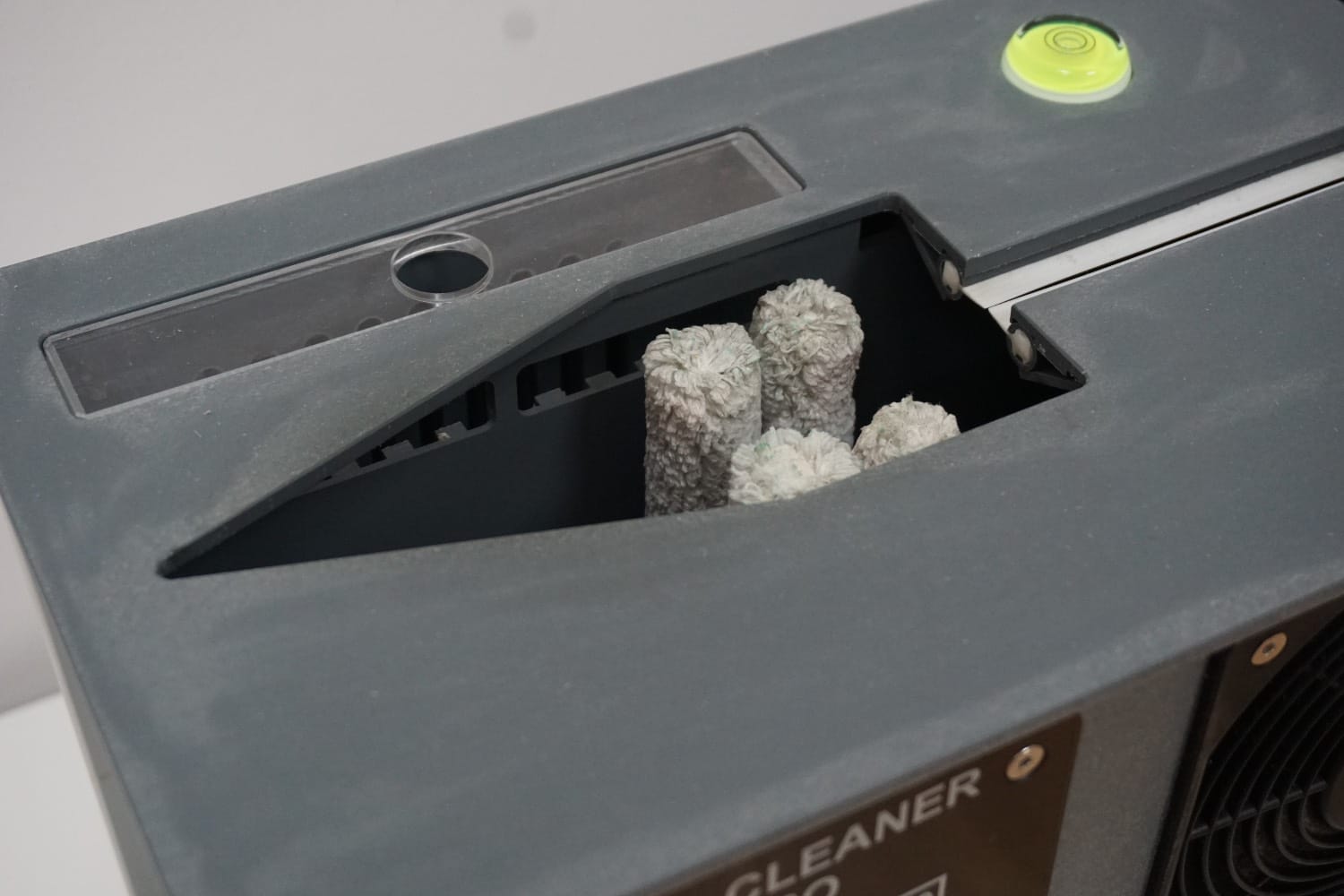
I did notice too that, inside the slot, one of the main record supports had changed from a narrow brass notch to a larger plastic/aluminium notch with central revolving wheel. The reason for that is to prevent accidental damage with the vinyl knocking the brass holder. I found that the new support held the vinyl more firmly in place too. On my older model, even when carefully placed in the slot, the vinyl sometimes didn’t ‘catch’ in the rotary system and didn’t rotate. A quick nudge on the edge of the record would push it into place and all would be well. I never had that issue with the new model and, I’ll tell you what, what a blessed relief that was! Now I could get the cleaning going and walk away and not hang around for an extra 30 seconds in case the vinyl hadn’t caught properly in the machinery.
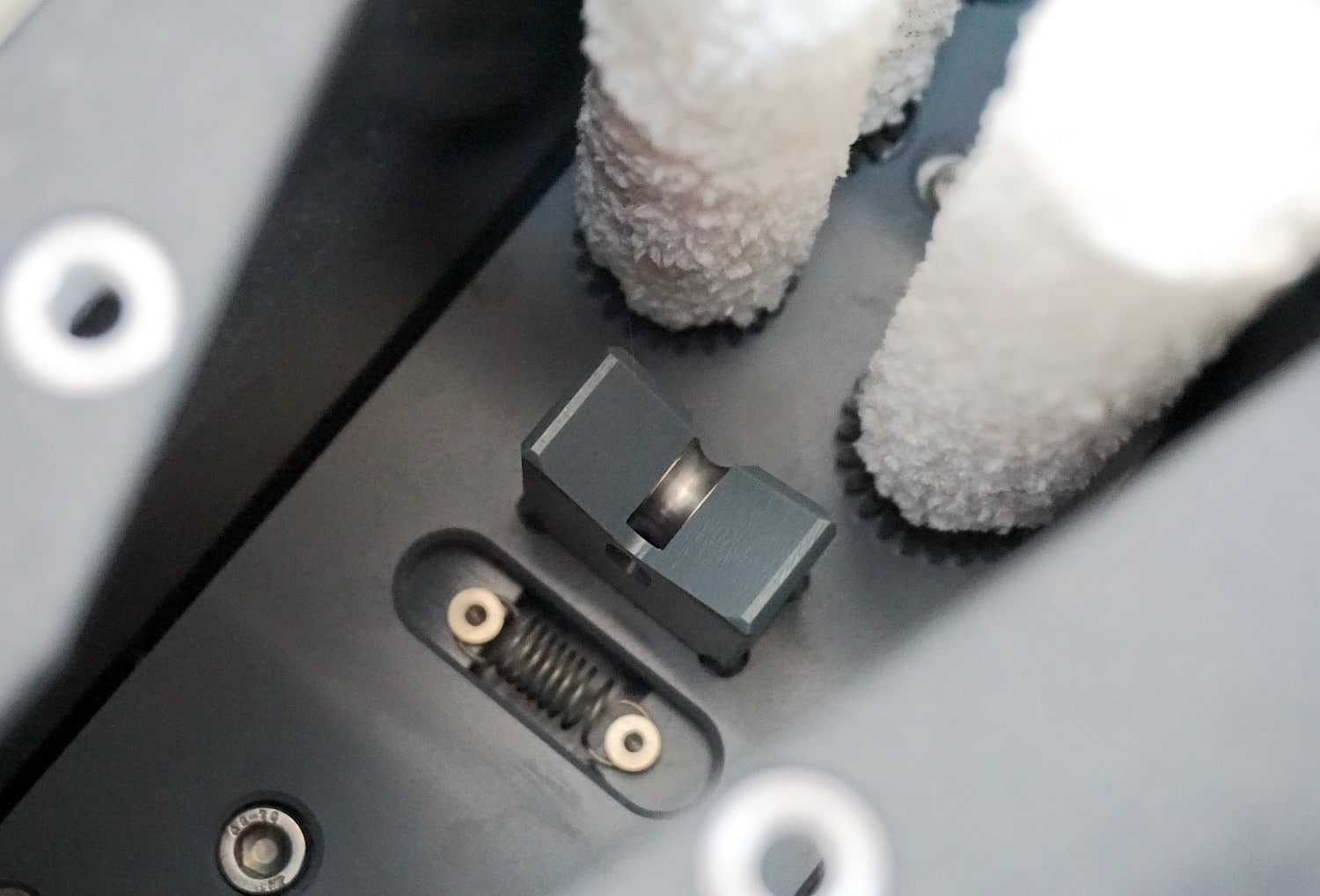
Other minor changes include a slightly embossed name plate on the side of the RCM and a slightly large window to view how much liquid is in the RCM’s bath.
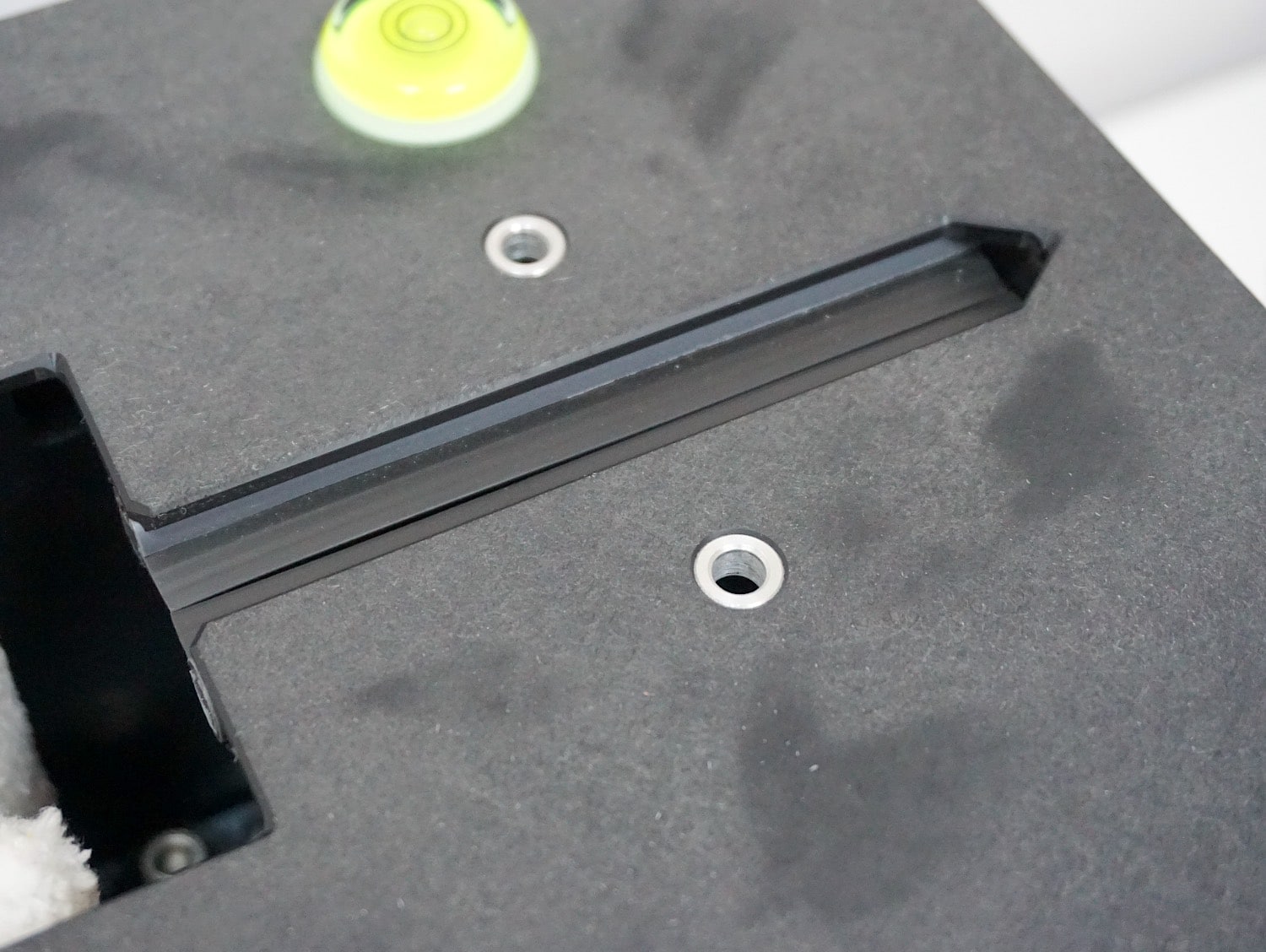
And finally? You know, sometimes…sometimes hi-fi companies just make things harder for themselves. Why? Well, I’m puzzled. If there are so may tweaks, changes and improvements, why is it that Audio Desk has not add a Mk.II, Mk.2, V.2 or some such to the name of this thing? Surely, someone in and around the company flagged up this important marketing point? As it stands, the company risks confusion, risks losing sales and demands more (and unnecessary) work from its world-wide distributors to explain that this new version is exactly that, a new version. More than that, the new machine has the words ‘The Original’ on its control plate! It patently isn’t original at all. It’s a brand new version! I imagine that the ‘Original’ tag relates to the longevity of the company in the ultrasonic cleaning business. But not everyone will get that point.
Hence, when buying this machine, I’d advise asking for the latest, Pro 2019 model. Just to prevent confusion.
Noise is supposed to be reduced on the new Pro 2019 and it is. It’s not whisper quiet but you can hold a conversation during the sequence. The older model was not too bad but there is an enhancement here. So we’re travelling in the right direction.
There are four colour options are available: grey, black, white and red. The black is more of a dark grey than a solid black – an anthracite or graphite colour. Grey is a solid, mid grey colour, the white is also solid. Red sells in small numbers and generally only a few will be stocked or is to order.
CLEANING 7” SINGLES
I did fear this test because I thought that fitting the adaptor would be a chore – not at all! The adaptor arrives in a neat aluminium/glass case and totals four sturdy pieces. Two hold the offending vinyl single in place and each one of those two pieces includes a roller to facilitate rotation while cleaning. The other two fit inside the RCM’s cavity and are easily located by strong magnets. There’s no manouvring, screwing on or in or twisting or anything awkward. The parts almost find their own locations because of the strong magnets fitted within.
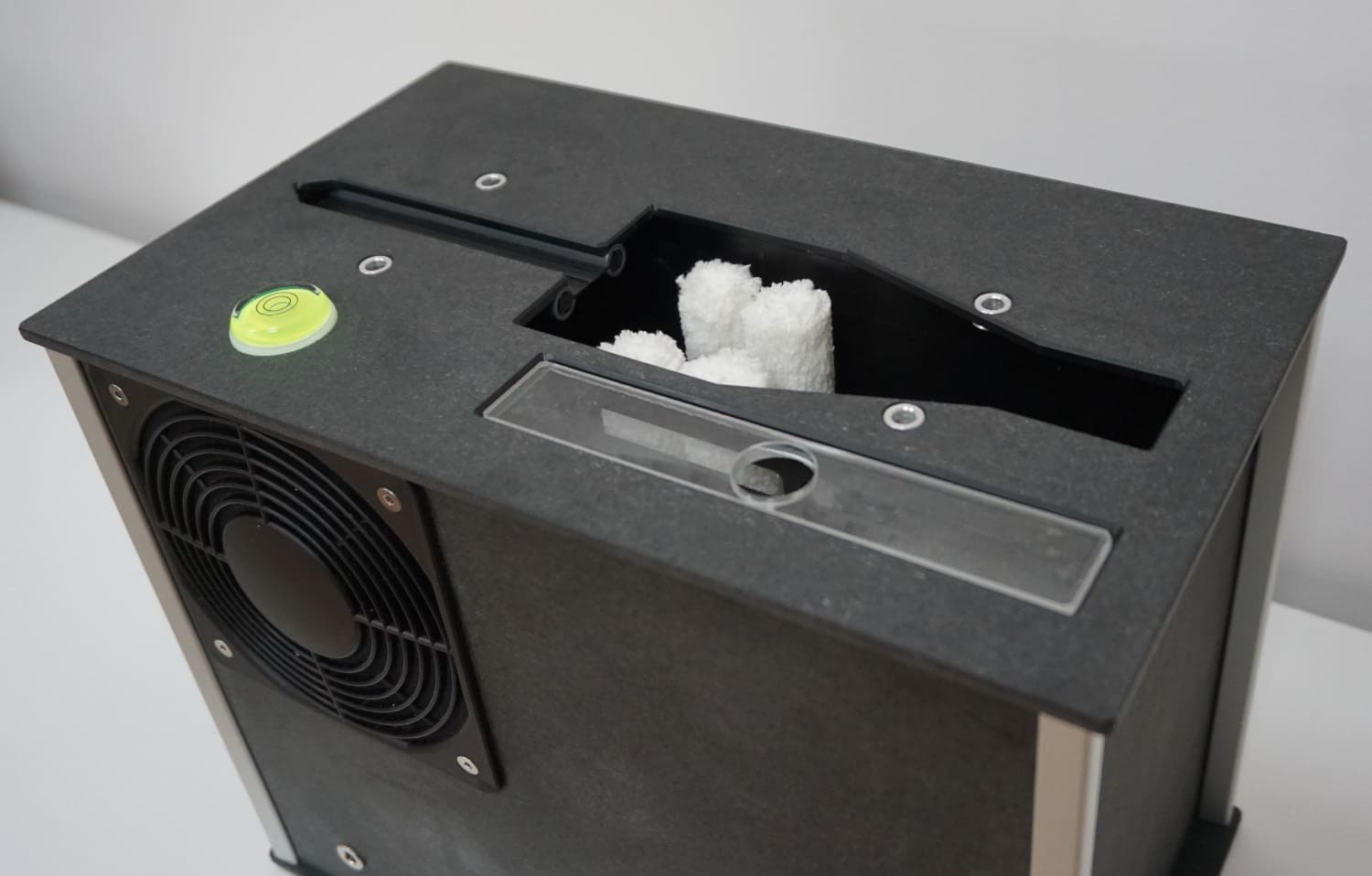
You then slot in the 7” and proceed as normally. Because 7” singles are odd beasts: arriving in slightly odd shapes and thicknesses, you might be wise to keep an eye on the cleaning progress because the disc may stick briefly, requiring a nudge to get it going. That said, I tried six singles and didn’t have an issue.
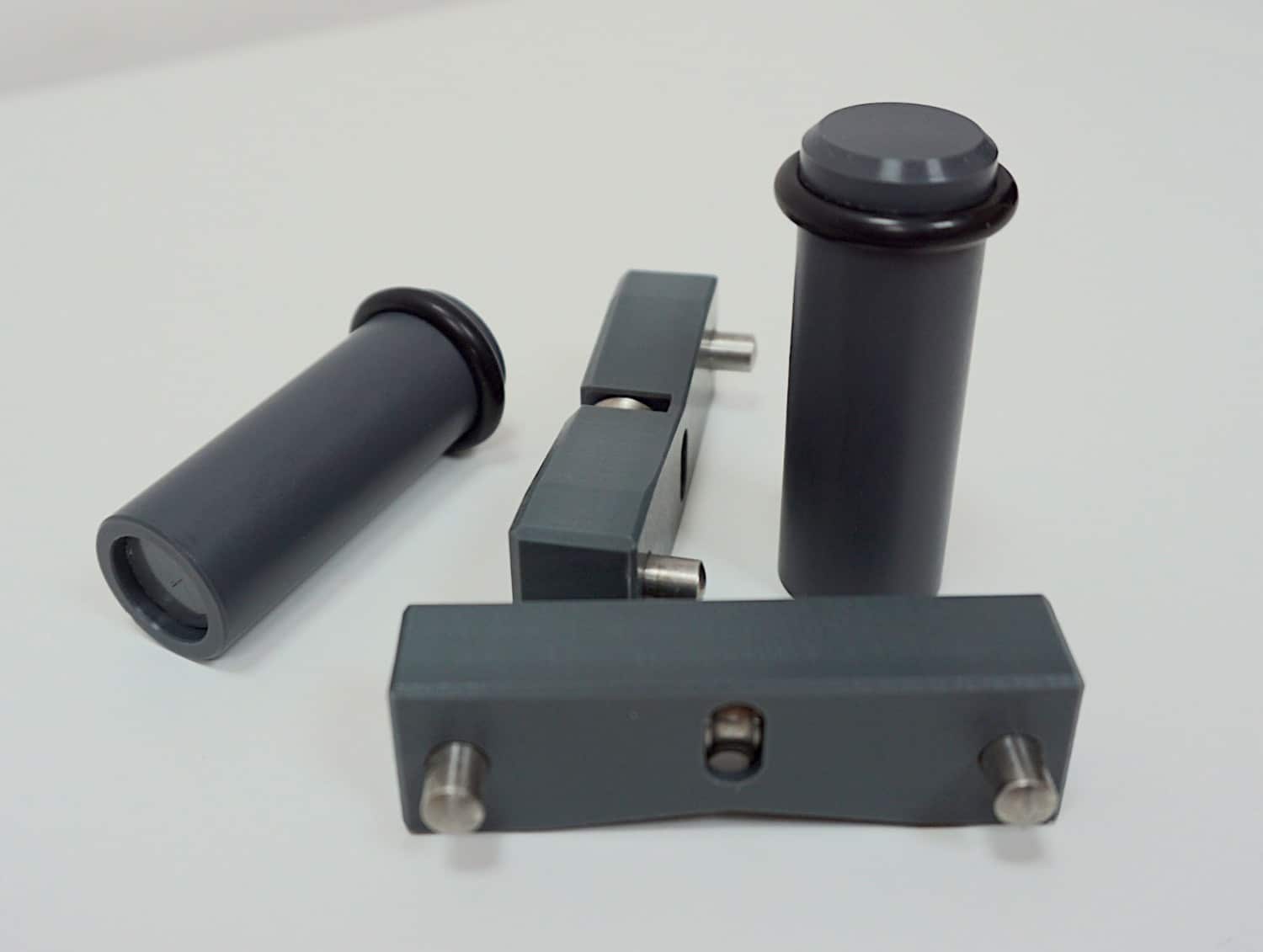
Also, because of the format’s idiosyncrasies, you might find a little bit of excess liquid on the surface after drying. Again, though, it depends on the single.

The resulting sound quality was definitely worth the effort. It’s so tough to properly clean a 7” single because there’s little room to work with but Audio Desk has found a solution I’m happy to work with.
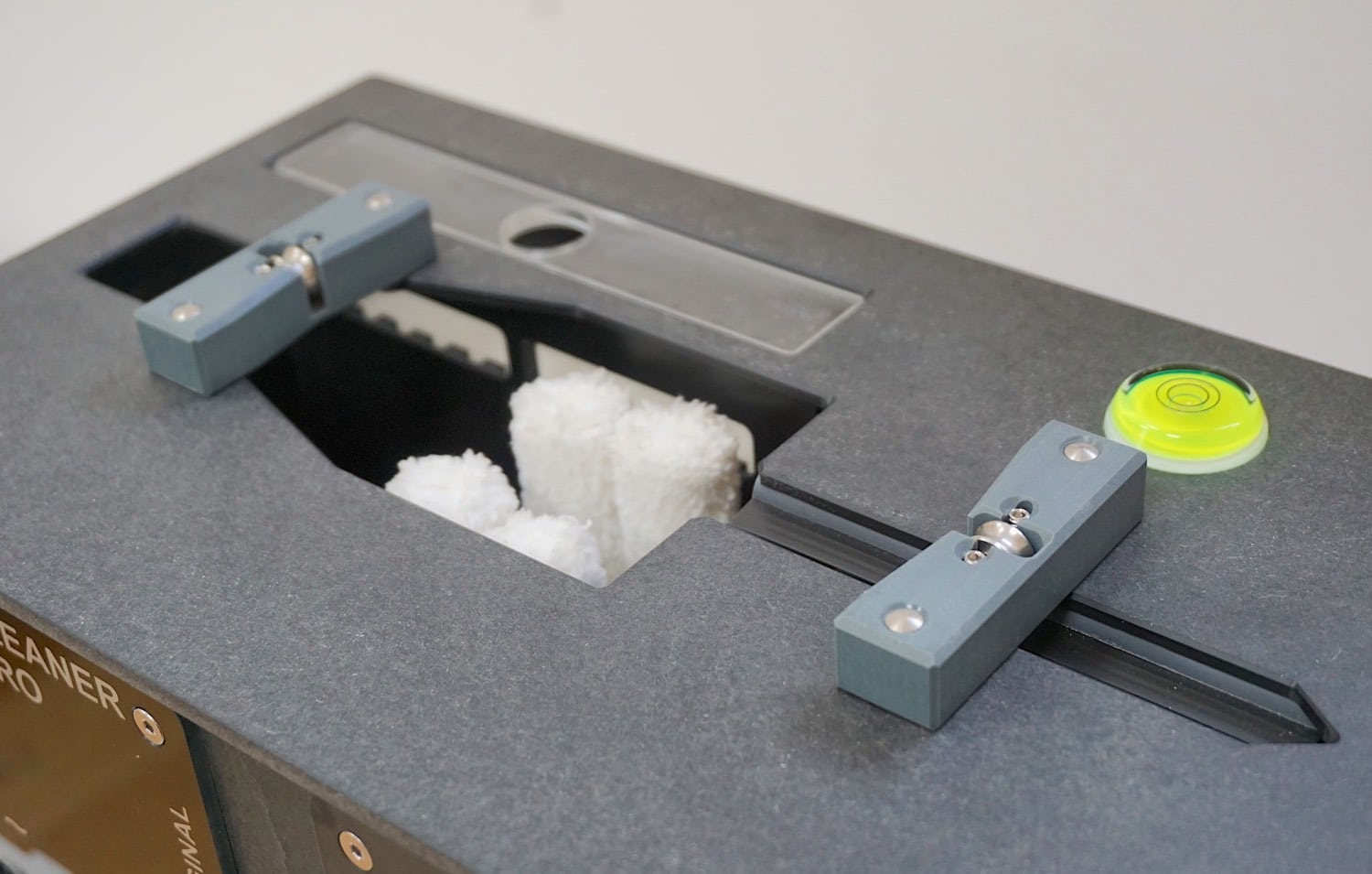
More than that, unlike some of the potentially damaging and rather clunky third party devices for the Audio Desk, this system is easy to install/deinstall, is elegant and a breeze to use.
SOUND QUALITY
I did do a sound test, using the older Pro model and several LPs. My original machine was released a few years ago now. To do the test, I used a surfactant on each record and chose an extended five minute RCM cleaning cycle.
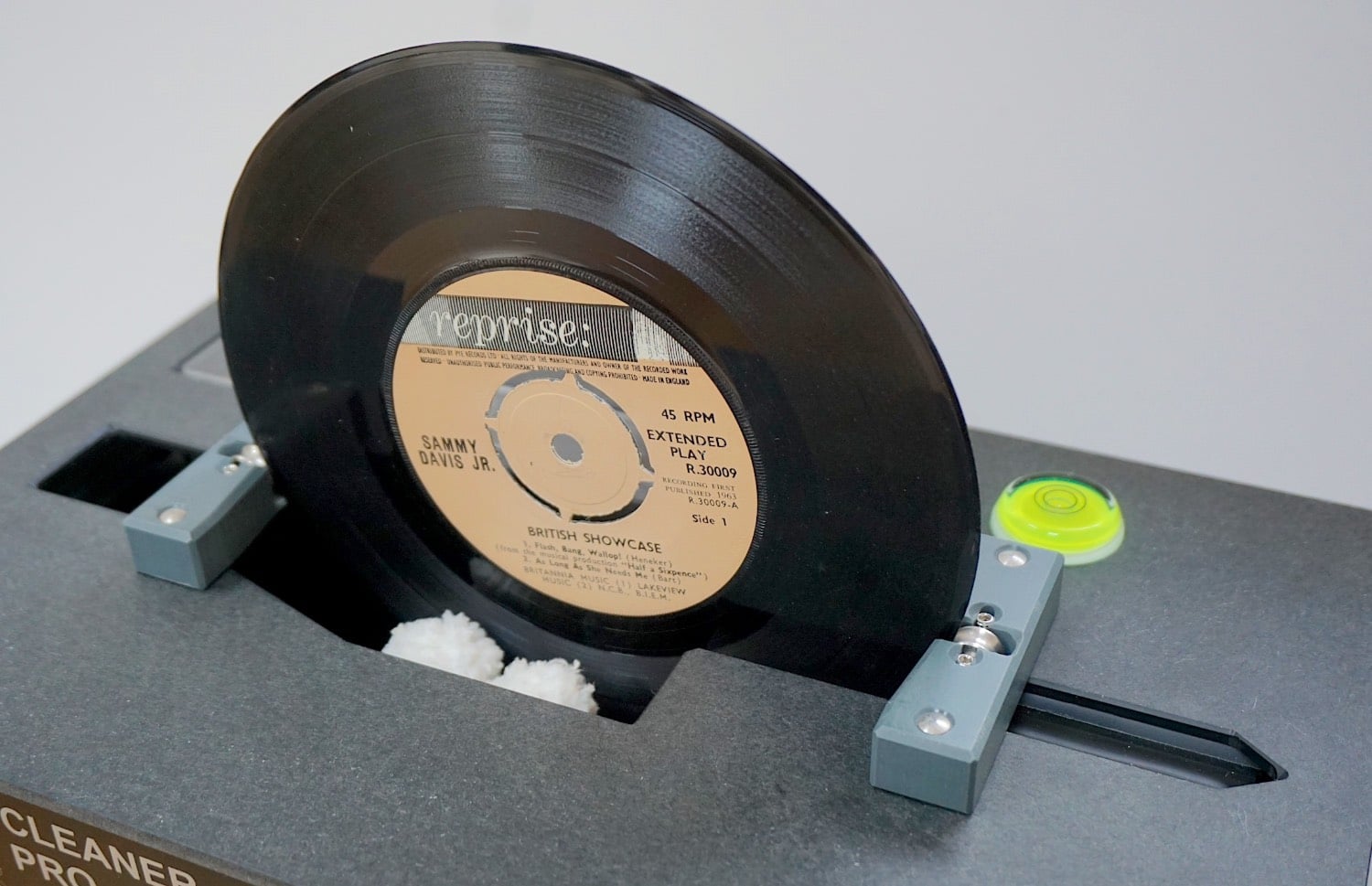
I applied the surfactant and ran the five minute cycle on five separate occasions. Twenty-five cycles in all, to get to a point where no apparent sonic benefit was to be had by further cleaning. Then I transferred the LPs to the new Pro 2019 and repeated a single surfactant/five minute cycle and listened.
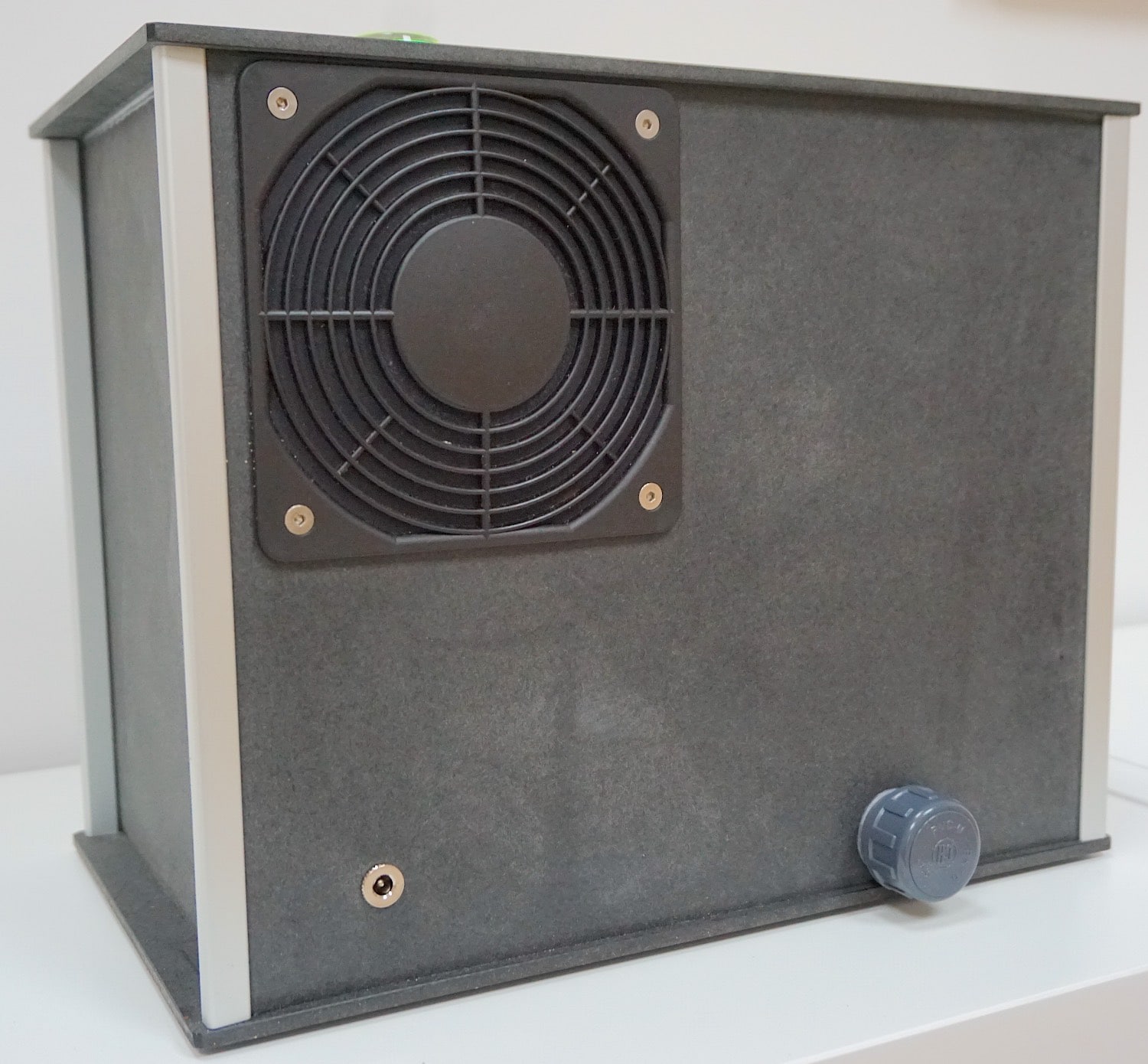
The result? Improvements! I was pleasantly surprised by this but the changes were certainly there. How did they manifest themselves? Clarity principally but as a result of lower noise. Sound had a great 3D effect, detail was solid, almost as if the information presented to the ear was embossed. The sense of clarity added a sense of authority to the sound, a command that was imposed gently but firmly. Music flowed very easily.
CONCLUSION
Well, I’ve fallen in love all over again. The original Audio Desk Vinyl Cleaner Pro was a superb performer – and it still is, I might add. The Pro 2019 is that much better. It not only corrects some of the wrinkles from the original design, it cleans 7” singles properly and (mostly) efficiently but it improves upon the basic sound quality.
Should you buy one? If you have a non-Pro version of this design, grab the latest Pro version now. It offers many upgrades. If you have an old Pro version and have the cash then it depends on your own priorities and circumstances but there’s reasons to upgrade in terms of 7” play, the design enhancements and sound quality. As for anyone who hasn’t tasted the pleasures of ultrasonic cleaning? Oh yes. After hearing the sonic results from cleaning with the Audio Desk Vinyl Cleaner Pro, you’ll realise that you’ll need to clean your entire collection, all over again. I know, I know but once you’ve heard the results, there will be no going back.
AUDIO DESK PRO 2019 ULTRASONIC VINYL CLEANER
Prices: £2,525
Includes two Cleaning Fluid concentrates, one bath filter and one set of four Microfibre barrels. Delivery with insurance to UK mainland £28 by next day courier.
Consumables and accessories:
Cleaning Fluid £14 (dilute to 4.5 litres with distilled/de-ionised water, change every 100 LPs).
Microfibre Cleaning Barrels (set of 4) £55 (change every 500 LPs).
Cleaning bath filter £14.50 (change every 500 LPs).
Wiper blades – set of 2 £16 (change approximately every 500-700 LPs).
Drive rings – set of 2 £18 (change as required but usually around 1500 LPs)
Fan filters (set of 2) £61 (dependent on environment used change as required but recommended around 800-1000 LPs).
Acrylic cover over bath filter £27
7″ singles adaptor official audiodesksysteme PRO cleaner £235.
Web: www.audioconsultants.co.uk
Tel: 0118 981 9891
TO BUY CLICK BELOW:
USA – https://amzn.to/3efRh8I
GOOD: overall design improvements, 7″ single cleaning facility, installation of the same, sound quality
BAD: nothing
RATING: 9
[Don’t forget to check out my Facebook Group, The Audiophile Man: Hi-Fi & Music here: www.facebook.com/groups/theaudiophileman for exclusive postings, exclusive editorial and more!]
REFERENCE
Origin Live Sovereign turntable
Origin Live Enterprise 12″ arm
Van Den Hul Crimson XGW Stradivarius Cartridge
Soundsmith Paua Mk.II cartridge
Icon PS3 phono amplifier
Aesthetix Calypso pre-amp
Icon Audio MB845 Mk.II monoblock amplifiers
Quad ESL-57 speakers with One Thing upgrade
Blue Horizon Professional Rack System
Harmonic Resolution Systems Noise Reduction Components
All vinyl was cleaned using an Audio Desk’s Ultrasonic Pro Vinyl Cleaner

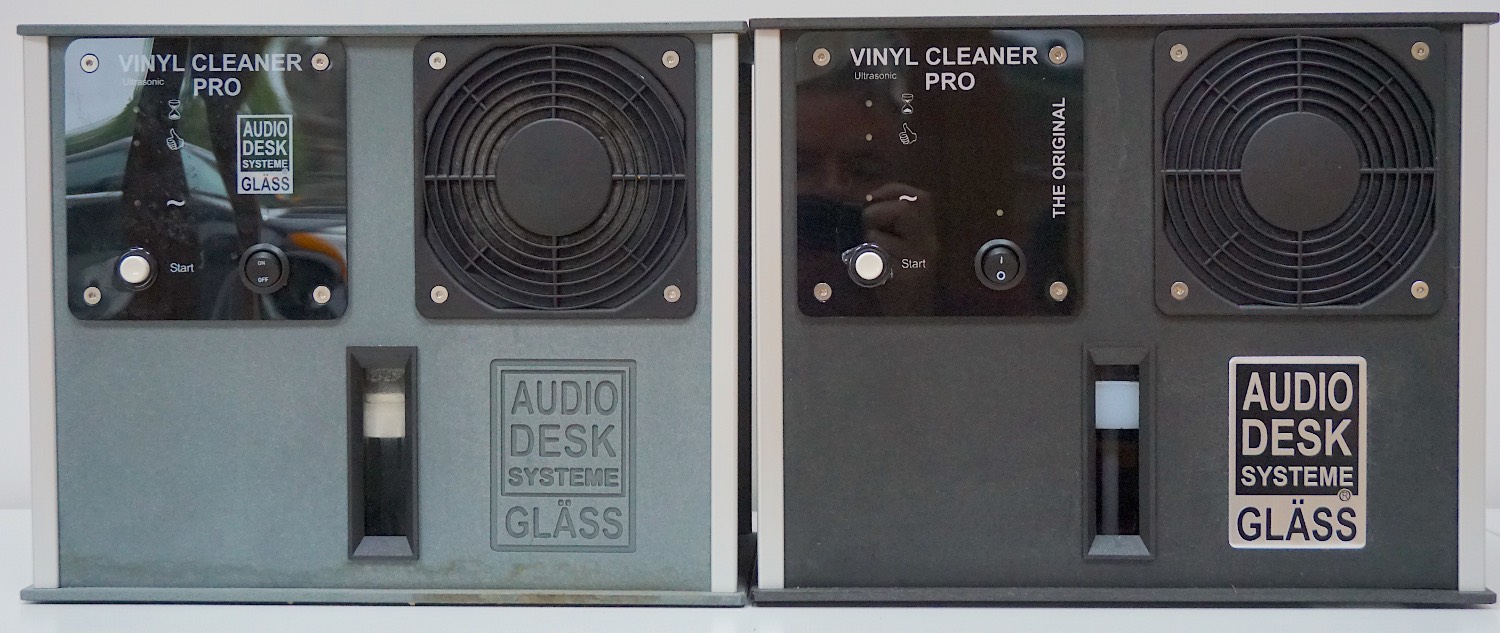
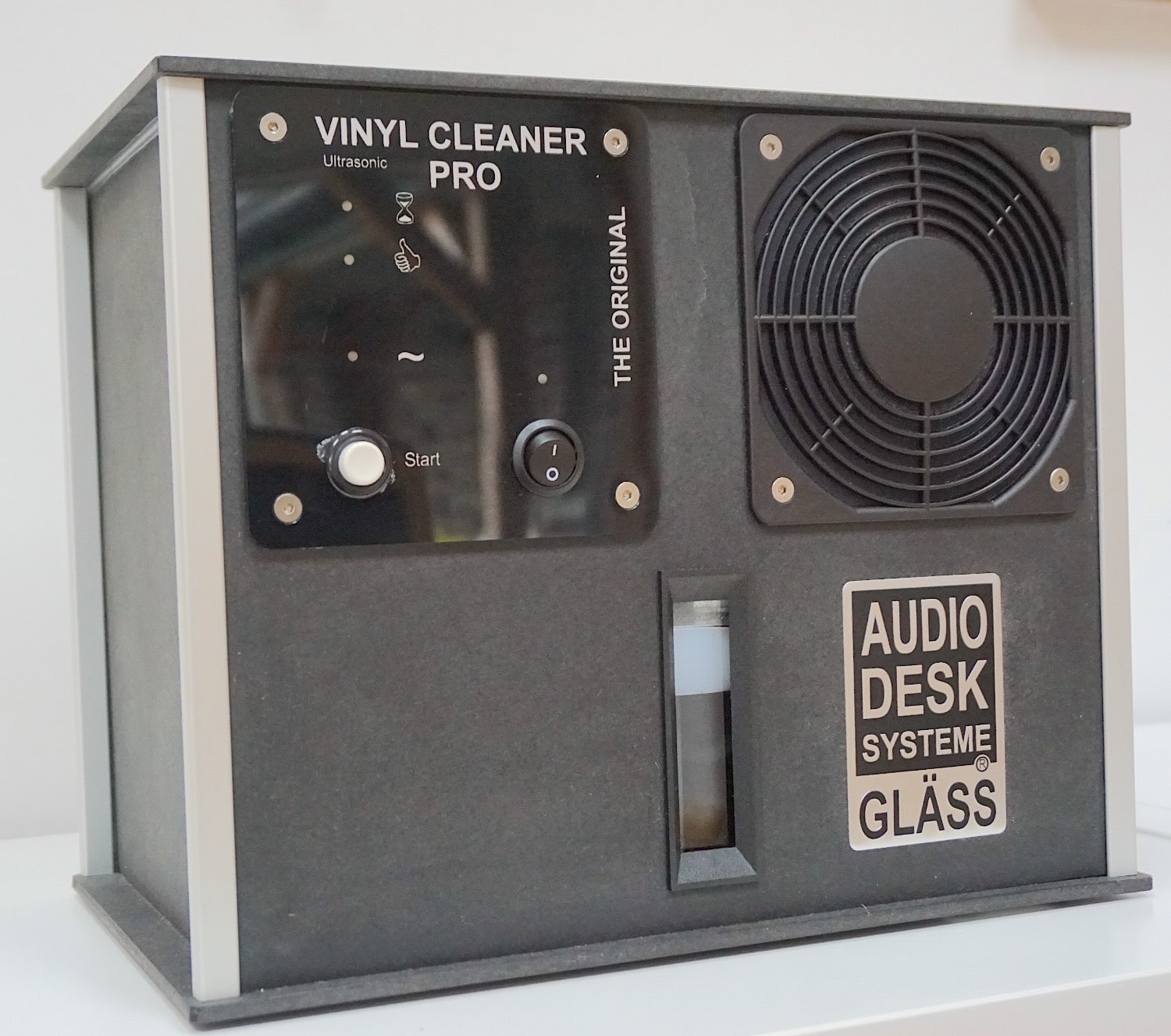



How does it compare with the Kirmuss !
The Audio Desk is superior as a basic piece of technology.
Hi Paul,
I bought one of these earlier in the year and it’s great,I wondered when you said “add surfactant” is that the brew you used when you did the Kirmuss/glass comparison ? I put the official fluid in for each refill of water do you add that and use a surfactant direct to the lp before placing in the machine?
I went ahead and got the Icom ps3 mk2 fantatic just got to make up my mind on turntable upgrade to finish off,
cheer’s Paul,
mike.
Hi Mike – the surfactant is added to the surface of the vinyl before you insert the vinyl into the RCM for cleaning. The surfactant I use now is a combination of Ilfotol, distilled water and glycol. If you want to use this combo and need more help – in terms of ratios, etc – please shout.
Hi Paul,
Thanks for your reply, yes please can you let me know the ratios for this as the one downside of the Audio desk is the cost of the official little bottles of surfactant,
Thank you again!
Hi Mike – Instead of the Audio Desk containing a bath of distilled water and Audio Desk liquid – I use distilled water and 7% alcohol. You only really need 0.5% alcohol for the alcohol to do its job (and that’s another story which I will address soon in a future video) and to clean the grooves, the other 6.5% is used for the following…
STOP HERE AND *THINK* – if you do the above you will VOID your warranty on your Audio Desk. Audio Desk will *NOT* allow alcohol in its chassis. Do the above AT YOUR OWN RISK. I don’t want to see any come-backs if you have issues in the future with Audio Desk or as a result of any mechanical problems. That said, I’ve been using this system for a long time without any problems and the final sound is way better than Audio Desk’s own liquid system. The choice remains yours, though. As I say, *process at your own risk*.
Still with me? 🙂 OK.
Grab a bottle of Ilfotol and dilute as directed into a litre bottle or whatever you decided to use.
Grab a pipette bottle – the one I mention in the Kirmuss review.
Grab a bottle of Glycol – again, the one talked about in the Kirmuss review.
Take two pipette’s worth go Glycol and squirt that into the pipette bottle (a ‘pipette’ of glycol will be around half of the pipette vial).
Fill the rest of the pipette bottle with the diluted Ilfotol. Shake well.
The Glycol will prevent the surfactant falling from the vinyl via gravity. You need 7% alcohol to melt the glycol off the vinyl surface as the RCM cleans.
Once shaken, fill the pipette vial with the bottle’s liquid.
Address the vinyl record now.
Using the vial, draw a line of liquid from the run out groove to the outer edge of the vinyl disk a the 12, 3, 6 and 9 o’clock positions. You will be left with a four-stripe cross around your record.
Grab a Kabuki brush – the one in the Kirmuss review. Buy the best you can afford.
Use that to evenly spread the liquid across the vinyl surface.
Then move your fingers towards the ends of the bristles, leaving a small amount of bristles at the tip. Doing this hardens the remaining bristle tips. Work the surfactant into the grooves in a spiral fashion – clockwise, then anti-clockwise.
Into the Audio Desk with your vinyl – clean your record (I use 5 beeps as ‘one cycle’). I actually then clean for 5 cycles (again, another video subject for another time) but you don’t have to.
When the cycle is complete, repeat again without surfactant to ‘wash’ any lingering surfactant off the surface (you don’t want the stylus to ‘play’ any remaining surfactant).
Sorted.
Thanks Paul,
I will get the different liquids and have a go,I was using a cleaning regime of disc doctor then a five beep clean in the audio desk, i’m going on memory regarding my old vip vacuum cleaner (it did 22 years service) which gave up a few years ago,i think the audio desk is a lot better i found it’s use like your review,a record sometimes still has surface noise but you can hear right into the sound stage and vocals in the back ground or in choral records easier to understand,
Good stuff – let me know how you get on, Mike.
Hello Paul
Thanks for very interesting reviews!
Some LPs are not for sell any more and when you by used records some of them contains a lot of noise, clics and pops. Some sound like it was raining during the recording some while some just have a few every now and then. What help can this cleaner offer to such records?
No problem, Rutger – some second hand records feature physical damage. No cleaner can repair damage. The answer to that is to hunt for a better quality copy. Apart from that, this cleaner will remove dust, friable muck, baked on dirt, solidified oils which leach from the vinyl and act as a release agent during pressing and more. Attrition is an under appreciated feature in vinyl cleaning and ultrasonic technologies offer the only method of adding attrition without causing damage to the vinyl surface.
Hi Paul
I’ve been pondering the Audio Desk against the KLAudio ultrasonic cleaner. I think this 2019 upgrade has pushed me in the direction of the Audio Desk. There also seems to be a price differential of over 100%! You mention buying through yourself: is that the amazon link on this page to Premium Sound UK? I don’t want to end up buying the wrong version as it doesn’t look like it says “Pro 2019” on the product itself.
(BTW do you know anything about the Flux Hifi Vinyl Vacuum – I can only find one review?)
Thanks
Keith
Hi Keith – what I mean is that, if you use my affiliate link, I get a slice of the price (it’s just a couple of percentage points, no more). Which I throw into the website budget. I have nothing to do with the retailer or the product, I get that from Amazon. All new models should be the 2019 version but, if you’re unsure, there should be a way to contact the seller to make a direct enquiry. If you’re nervous about the whole thing, give me a shout here and I’ll pass on the details of the official distributor and you can talk to him direct. Are you in the UK?
The Flux is new to me, I have to say. I’ll make a note, though.
Any chances you might review the Degritter in the future? You did the “affordable” Kirmuss already, now this Audiodesk, the KL Audio is no more… Your thoughts on the great looking Degritter would be an interesting read!
There is a good chance, yes Simon. Talking to the company off and on so there is a chance. Nothing sorted as yet…
Hi Paul and thanks for the great review which has persuaded me to buy one. Can you clarify whether de-ionised water can be used – your review seems to suggest you can use this or distilled. Thanks again.
I’d recommend distilled only, Gary – deionised water doesn’t remove bacteria.
Good Afternoon Paul.
Degritter and this model are the same price, so as my first ultrasonic cleaner which one should I plump for?
Thank you
Degritter.